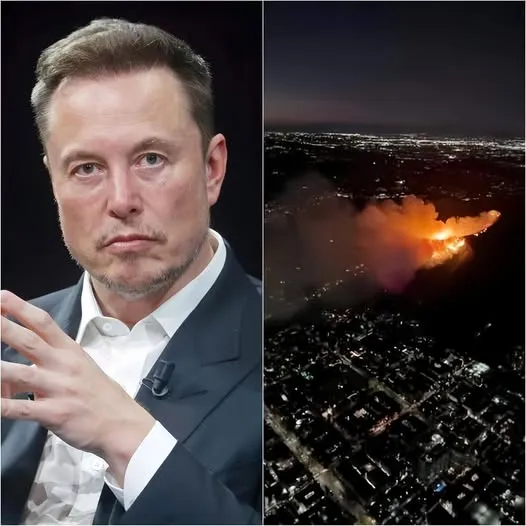
The United States is on the brink of a severe environmental and public health crisis, one that could have far-reaching consequences for the nation's ecosystems, air quality, water safety, and overall well-being. The Environmental Protection Agency (EPA), tasked with protecting human health and the environment, has become a focal point of controversy under the Trump administration.
Recently, the administration announced its intention to eliminate its scientific research office, a move that could result in the firing of more than 1,000 scientists and other essential staff. This decision, framed as part of a broader push to shrink the size of the federal government and increase efficiency, has sparked alarm across the country.
At the heart of this proposed overhaul is the planned elimination of the Office of Research and Development (ORD), which serves as the scientific backbone of the EPA. The office currently employs around 1,540 scientists, including chemists, biologists, toxicologists, and other experts. According to documents reviewed by Democratic staff on the House Committee on Science, Space, and Technology, up to 1,155 of these employees—nearly 75% of the staff—could be laid off.

The scale of these layoffs is unprecedented, and it is evident that the Trump administration is willing to take drastic measures to meet its goals of reducing the size of the government, even if it means undermining critical research efforts designed to safeguard public health and the environment.
The consequences of these cuts could be devastating. The EPA’s scientific research office provides the foundational data that informs the agency’s rules and regulations to protect air and water quality, manage toxic waste, respond to natural disasters, and monitor pollutants. Without the expertise of these scientists, it would be impossible for the EPA to fulfill its mission to protect the public and the environment.
The potential loss of this institutional knowledge threatens to dismantle decades of progress in environmental protection and public health.
The plans to dissolve the Office of Research and Development were first reported by the New York Times, and the details have since sparked fierce criticism from both politicians and environmental advocates. EPA Administrator Lee Zeldin, who has long supported efforts to streamline government operations, has proposed a massive 65% reduction in the agency’s budget.

This cut would necessitate significant reductions in staffing levels across many vital functions, including monitoring air and water quality, ensuring lead abatement, and responding to natural disasters. The plan is an affront to the very essence of the EPA's role in safeguarding the nation’s health and environment.
A central feature of the Trump administration's plan is the consolidation of power under the guise of increasing efficiency. As part of this effort, the EPA has introduced new guidelines requiring that any spending greater than $50,000 must receive approval from Elon Musk’s so-called "department of government efficiency."
Musk, known for his involvement in the private sector and his controversial stance on various issues, has become an unlikely figure in the administration's push to reshape the government. Critics argue that Musk’s role in this process is emblematic of the administration's prioritization of corporate interests over public welfare.
The proposed cuts to the EPA come on the heels of the administration’s broader shift in environmental policy. Under President Trump’s leadership, the United States has seen a rollback of numerous environmental protections, including regulations designed to limit carbon emissions, reduce pollution, and protect endangered species.
One of the most notable policy shifts has been the resurrection of coal as a primary energy source.

The Harrison Power Station, a coal-fired plant in West Virginia, is a prime example of this shift. Under the Trump administration, there has been a concerted effort to promote coal as a solution to meet the growing energy demands, including the energy needs of industries like artificial intelligence. This move has raised concerns about the long-term environmental and health impacts of such a shift, particularly in terms of air and water quality, which are closely tied to the burning of coal.
Critics of the Trump administration’s environmental policies argue that these cuts and regulatory rollbacks put lives at risk. Former EPA heads have warned that dismantling the agency’s research capacity will undermine its ability to protect the public from dangerous pollutants and environmental hazards. They point out that the agency's scientific workforce is crucial in understanding the health risks posed by pollutants, developing strategies to mitigate those risks, and ensuring that the nation’s air, water, and land remain safe for future generations.
In a statement, California Congresswoman Zoe Lofgren, the top Democrat on the science committee, condemned the proposal to eliminate the EPA’s research office, calling it illegal. Lofgren emphasized that the EPA was established by Congress to protect human health and the environment, and its scientific research office was a fundamental part of that mission.

Without the office, she argued, the agency could not meet its legal obligation to rely on the best available science when making decisions that impact public health and the environment. She also criticized the Trump administration for prioritizing the interests of polluting industries over the safety and well-being of Americans, suggesting that the president and his advisers were attempting to dismantle science itself.
Environmental groups have also voiced their opposition to the proposed cuts. Ticora Jones, the chief science officer at the Natural Resources Defense Council, described the Trump administration’s actions as a clear case of "putting polluters over people." Jones called on Congress to intervene and demand that the EPA retain its scientific staff to ensure that the agency could continue to fulfill its mission of providing clean air, water, and land for all Americans.
The EPA’s work has long been a pillar of public health and environmental protection in the United States, and the proposed elimination of its research office marks a significant departure from this legacy. If these plans are carried out, the nation will likely face a future where environmental regulations are driven by political agendas rather than scientific evidence.
The consequences could be devastating for both public health and the environment, as the country would lose a critical layer of protection against the harmful effects of pollution and climate change.
As the situation unfolds, it remains to be seen whether Congress will take action to block these cuts and ensure that the EPA retains its ability to carry out its vital mission. For now, the threat of these massive layoffs and the dismantling of the EPA’s scientific research capabilities hangs over the country, with potentially dire consequences for the environment and public health.
The battle over the future of the EPA and its ability to protect the American people is far from over, and the outcome will likely have lasting repercussions for generations to come.
-1742812503-q80.webp)


